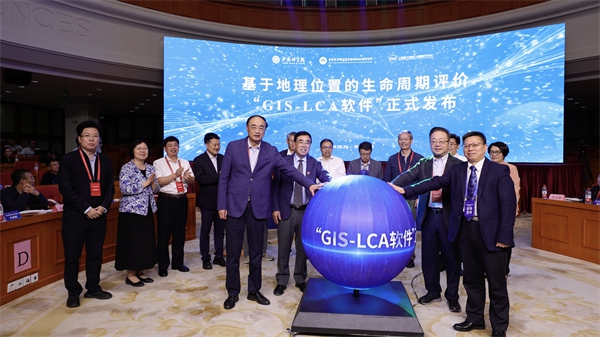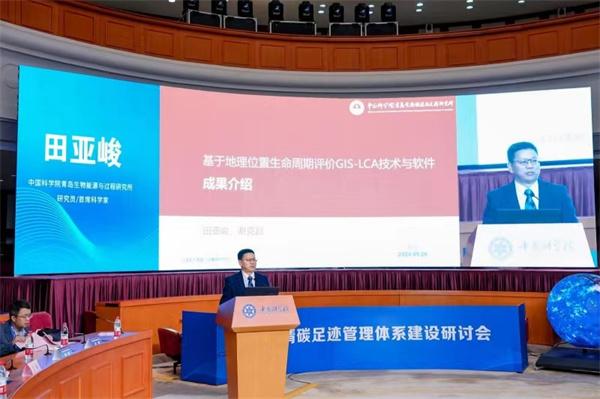
 0 Comment(s)
0 Comment(s) Print
Print E-mail China.org.cn, September 27, 2024
E-mail China.org.cn, September 27, 2024Chinese scientists have developed a carbon footprint assessment system which spatializes a carbon footprint by integrating a geographic information system (GIS) into a full life cycle assessment (LCA). This comes as the country has advanced efforts to establish a carbon footprint management program that is both tailored to national conditions and aligned with international standards.

Software for the GIS-LCA system was released at a seminar focusing on the construction of a carbon footprint management system. The seminar was held in Beijing on Sept. 26, 2024. [Photo courtesy of the Qingdao Institute of Bioenergy and Bioprocess Technology of the Chinese Academy of Sciences]
Software for this GIS-LCA system was released Thursday at a seminar in Beijing that gathered representatives from relevant government departments, academia, companies and industrial associations.
During his speech at the seminar, Xie Kechang, academician and former vice president of the Chinese Academy of Engineering, expressed how current international standards do not account for variations in carbon footprints of products that are the same but produced in different locations. He went on to add that this limitation does not suit China's national conditions well. Xie offered guidance to the team who developed this new carbon footprint assessment system.
Tian Yajun, chief scientist of the Qingdao Institute of Bioenergy and Bioprocess Technology at the Chinese Academy of Sciences (CAS) and leader of the team who developed this new system, also emphasized the significance of accuracy in carbon footprint calculation, stating that "an accurate and reliable carbon footprint is one of the important foundations for promoting the green and low-carbon transformation of the economy and society."

Tian Yajun, chief scientist of the Qingdao Institute of Bioenergy and Bioprocess Technology at the Chinese Academy of Sciences (CAS) and leader of the team developing the GIS-LCA system, spoke during the seminar held in Beijing on Sept. 26, 2024. [Photo courtesy of the Qingdao Institute of Bioenergy and Bioprocess Technology at the CAS]
Both academics highlighted that the integration of GIS with LCA addresses this limitation and enhances assessment accuracy.
According to Tian, also head of the Extended Energy Big Data and Strategy Research Center at the Qingdao Institute of Bioenergy and Bioprocess Technology at the CAS, this carbon footprint assessment system, built on a decade's worth of accumulated big data, can model real-world scenarios, planning the actual paths of carbon footprints while supporting visualization in the form of flow charts.
He added that this system can be applied in a wide variety of contexts and by a diverse array of institutions, including products, services, supply chains, companies, industrial parks, industries and governments.
With this GIS-LCA system, Yueqing city in Zhejiang province has developed China's first carbon footprint calculation model for local industrial clusters. It has also created a carbon footprint roadmap for electrical product supply chains. On this basis, the model has identified key points and provided plans for carbon reduction.
In addition, the city has developed the country's first spatialized, high-resolution background dataset for the electrical industry, as well as has established a public carbon footprint service platform that integrates products, supply chains, industries, businesses, certification bodies and the government.
According to an action plan released in June by the MEE in collaboration with 14 other government departments, China aims to preliminarily establish a carbon footprint management program with national guidelines for calculating product carbon footprints as well as calculation rules and standards for approximately 100 key products by 2027, with the intent to expand this system to include calculation rules and standards for approximately 200 key products by 2030.
The national guidelines GB/T24067-2024, titled Greenhouse gases—Carbon footprint of products—Requirements and guidelines for qualifications, are scheduled to take effect on Oct. 1.
Looking ahead, Tian said that he and his team look forward to developing their GIS-LCA system into an important component of China's carbon footprint management program, and even part of international rules.